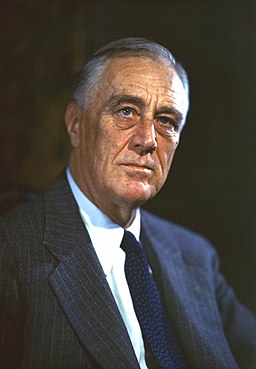📖 Presidential Profile
Comprehensive overview of leadership, policies, and historical significance
📋 Biography & Political Journey
The New Deal Revolution
Franklin Delano Roosevelt entered the presidency during the worst economic crisis in American history, with unemployment reaching 25% and banks failing across the nation. His **New Deal** programs fundamentally transformed the relationship between government and citizens, creating social safety nets and federal agencies that persist today. The **Civilian Conservation Corps**, **Works Progress Administration**, and **Social Security** system represented unprecedented federal intervention in the economy and established the principle that government has responsibility for citizens’ economic welfare.
Wartime Leadership and Global Strategy
Roosevelt’s leadership during World War II demonstrated his skills as both a domestic and international leader. His **”Arsenal of Democracy”** approach helped Britain survive the Nazi onslaught through Lend-Lease before America officially entered the war. Following Pearl Harbor, FDR successfully managed a complex alliance with Churchill and Stalin while overseeing the massive mobilization of American industry and military forces. His **”Four Freedoms”** speech articulated American war aims and post-war vision for human rights globally.
Constitutional Innovation and Political Mastery
Roosevelt’s **four presidential elections** broke the two-term tradition established by Washington and demonstrated his unique political appeal to American voters. His mastery of new media, particularly radio through his **”Fireside Chats”**, allowed him to communicate directly with citizens and build support for his policies. FDR’s ability to build coalitions across different Democratic Party factions – from Southern conservatives to Northern liberals to urban immigrants – created the modern Democratic coalition that dominated American politics for decades.
The Court-Packing Scheme and Constitutional Crisis
Roosevelt’s attempt to **”pack” the Supreme Court** in 1937 represented one of the most controversial episodes of his presidency and a serious constitutional crisis. Frustrated by Court decisions striking down New Deal programs, FDR proposed adding up to six new justices for each member over age 70. Even many Democratic allies criticized this as an attack on judicial independence and separation of powers. The scheme ultimately failed in Congress, but the Court began upholding New Deal legislation, leading to claims that the justices had been intimidated. This episode damaged FDR’s reputation and contributed to Republican gains in the 1938 midterm elections.
The Presidential Stamp Collection
FDR was an avid **stamp collector** who owned over one million stamps and often conducted presidential business while working on his collection. He would frequently **design commemorative stamps himself**, sketching out ideas during meetings and having the Post Office Department create them. During World War II, he once spent an entire Cabinet meeting discussing whether a proposed stamp honoring Chinese resistance should show Chinese or American flags more prominently, leaving Treasury Secretary Henry Morgenthau to complain in his diary that **”we spent 45 minutes on stamps while the country is at war.”** Roosevelt’s collection was so extensive that after his death, it took months to catalog and was eventually sold to help fund his presidential library.
Humor & Jokes
Brain Trust Advisors
FDR's 'Brain Trust' was so smart, they made rocket scientists look like underachievers. Intellectual firepower…
Read More →Greatest Wins
🏛️ Creation of Social Security System
Roosevelt established America's Social Security system, providing economic security for elderly and disabled citizens that…
Read More →Epic Fails
🏛️ Attempted Purge of Conservative Democrats
Roosevelt's failed attempt to oust conservative Democrats in 1938 primaries backfired spectacularly, weakening his party…
Read More →